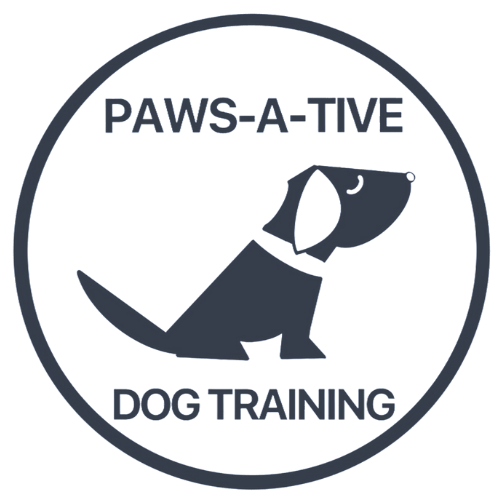Keeping It Classy - All About Dog Training Classes
Private Trainer vs. Group Classes
&
Home classes vs. outdoor classes vs. indoor gym classes
Having worked at a large training facility, I was afforded a climate-controlled environment with the best training equipment available. When I transitioned to the status of a private trainer with no indoor facility, my options for training sites were either the client’s home or a nearby park/outdoor venue.
So, the question is---what scenario is best for you and your dog?
There are always going to be pros & cons for any of the options mentioned above, so to thine own self be true! And here are some tips and prompts if you don’t know where to start…
First - Take a look at the missed-class policy of the facility/trainer.
Do you have to make up the class within a set amount of time or is there a straight up no-refund policy for missed classes?
Training facilities usually cap classes at a certain number (usually around 8 dogs) so if you miss a class, your makeup class might have to take place on another day and time, as slots fill up quickly and often weeks in advance.
For individual trainers, their schedules can also be tight and trying to do make-up classes requires a juggling act-hence a time-restricted make up policy or a straight up no-refund policy.
Second - what is the structure of the class you are looking at?
Larger facilities often run open enrollment, which means that owners/dogs rotate in and out weekly as they start and end their 6-week classes (usually the standard duration).
As a private trainer, I offer both closed & open enrollment, but many private trainers only offer closed or private sessions.
But let’s dive deeper - what are the pro’ & cons of Open vs. Closed Enrollment?
Open enrollment group classes have more flexibility for you if you miss a class for whatever reason or can’t commit to 6 straight weeks.
Closed enrollment (in my group classes) means that if you don’t make it to a class, you will get notes/access to videos on what you missed and the homework that was assigned.
Open enrollment means that the instructors are constantly dealing with owners/dogs who aren’t always on the same page. Someone who is in week 5 already knows the drills vs. someone who is attending their first class and needs more attention and guidance.
Open enrollment means new dogs are coming in that can add new experiences & exposures to those already enrolled.
In the open enrollment classes, the lesson plans were the same week in and week out covering the basic foundational skills for that level. For those who were further into the sessions, they increase the criteria levels using duration, distance, & distractions.
In closed enrollment classes, the instructor is bringing everyone through on the same track. They also teach the same foundational behaviors with built-in criteria for everyone since they are all on the same page.
Some people enjoy being with the same group of owners/dogs, while others enjoy meeting new owners/dogs each week.
Bottom line in any class is that you are going to see a lot of repetition for the obvious reason that practice makes perfect!
If you are looking for a flexible, very basic class with new dogs coming in weekly (good for socialization), the facility or a private trainer with OPEN ENROLLMENT may be for you!
If you are looking for a fixed day and time with the same class members along with a steady progression of criteria that add distance, distractions, and duration, then a private class or trainer might be ideal.
Third - Location-Location-Location:
Working indoors means that your climate, and to some extent, the distractions are more easily controlled. It also is confined to a set area, so if you need to put distance between dogs, it may not be enough; especially for a dog that is experiencing reactivity issues.
Working out of your home may prove to be convenient, as well as offering the real triggers that your dog may need to work on (door bell, neighborhood-related issues etc) but it does not offer the benefit of socialization or dealing with the usual distractions that one finds going out for a simple walk.
Working outdoors offers real-life distractions that you won’t get in an indoor facility or from home. You and your dog get hands on experience in a park with all the unplanned distractions that come with being out-and-about. For some dogs (and owners) this can be too much!
You should always be allowed to audit a class (without your dog) whether it be an indoor facility or a private trainer. Although, those trainers who only offer private in-home sessions, the best you can hope for is a complimentary house-call to see if you and the trainer have similar ideals and ways of attaining your goals.
In ANY instance – what do I want to look for?
Your instructor should be accredited & a member of some recognized institution such as: APDT, CCPDT, AKC, or graduated from an ACCREDITED TRAINING FACILITY.
They should practice Positive Training Methods which means no adverse methods are employed (Negative Punishment or equipment: Leash popping; shock collars; prong collars etc).
You need to LIKE the trainer and LIKE the message they are delivering to you about their training methods and philosophies.
They should be willing to chat with you via email, text, phone call to gather some basic information about your dog, your goals, your expectations.
Regardless of which class or instructor you choose, YOU are the biggest equation in the success of your dog’s obedience. If you are ready to invest time in showing up for every class, practicing every day, and being patient and consistent you are well on your way!
